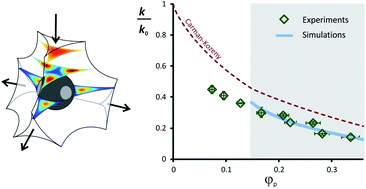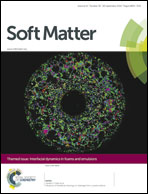Foam clogging
Abstract
To what extent are aqueous foams prone to clogging? Foam permeability is measured as a function of particulate loading (trapped hydrophilic particles) under conditions where the particle to bubble size ratio is allowed to increase when the number of particles per bubble is fixed. In addition to experiments performed on the foam scale, we investigated experimentally and numerically the hydrodynamic resistance of a single foam node loaded with one particle. It is shown that, with respect to solid porous media, aqueous foams clog more efficiently due to two reasons: (i) the deformation of interfaces allows for larger particles to be incorporated within the interstitial network and (ii) the interfacial mobility contributes to lowering of the reduced permeability.


 Please wait while we load your content...
Please wait while we load your content...